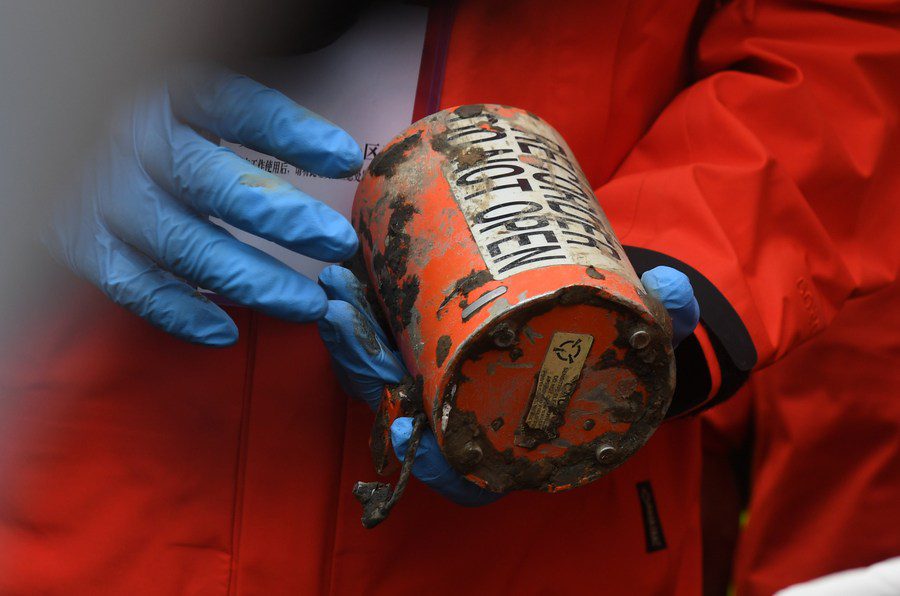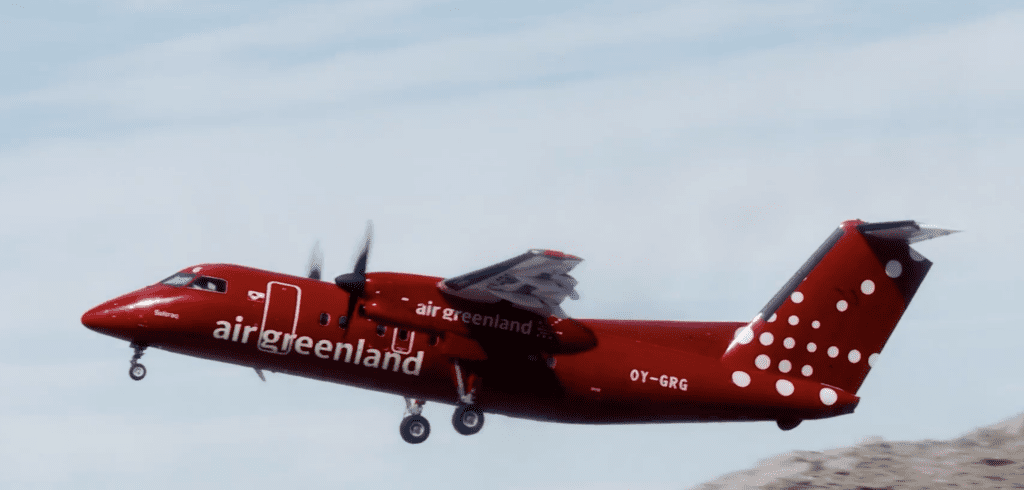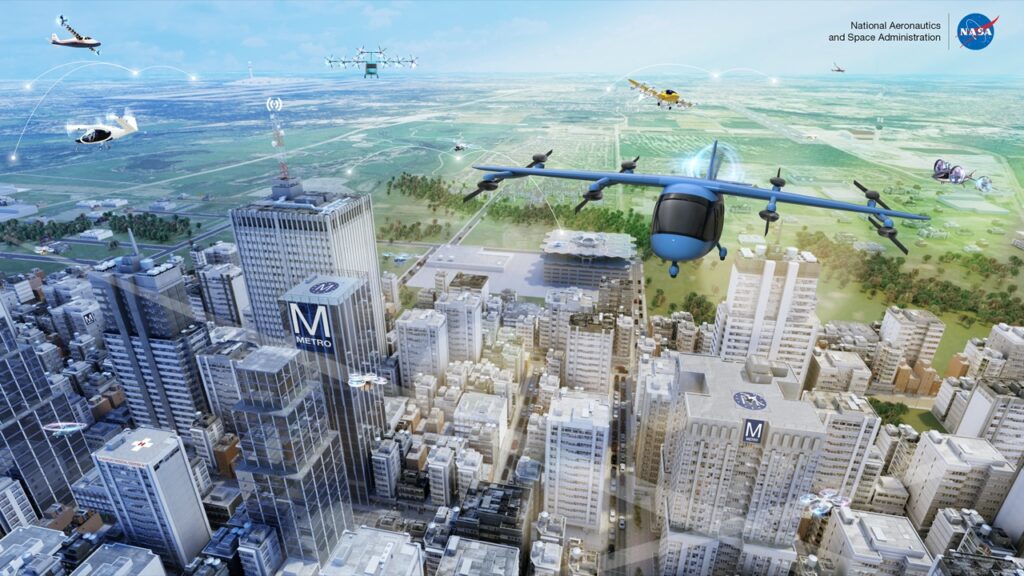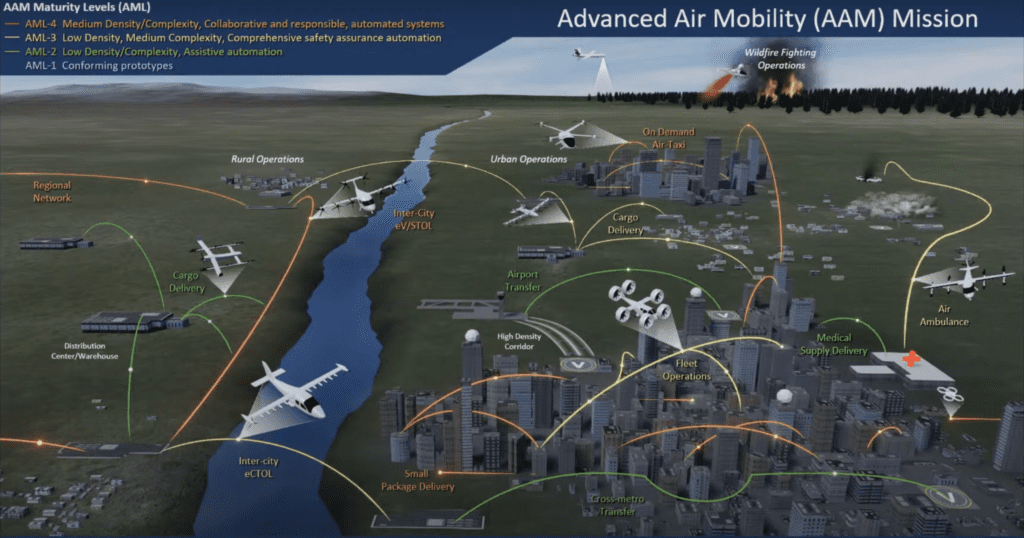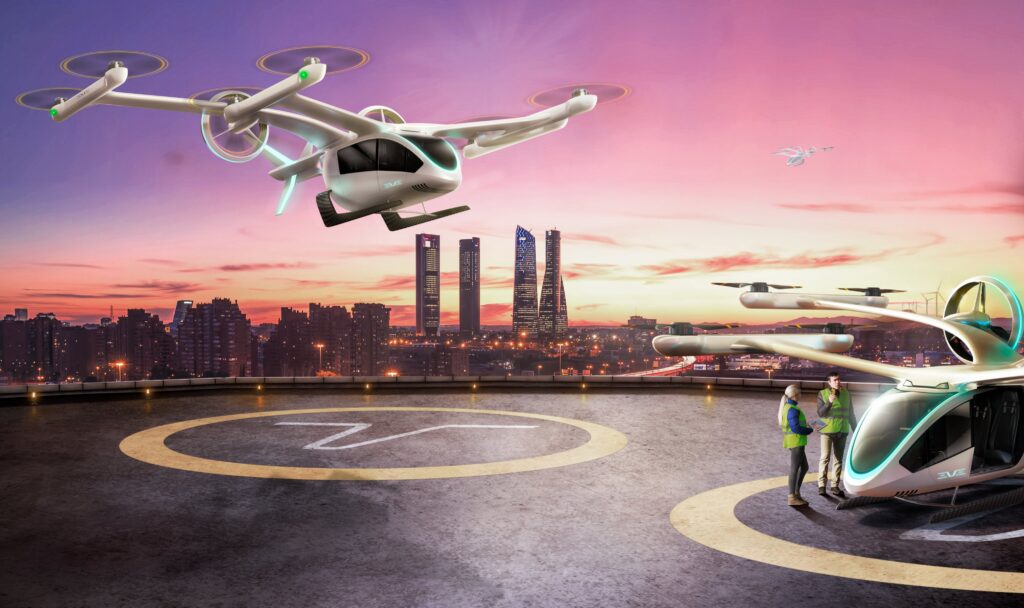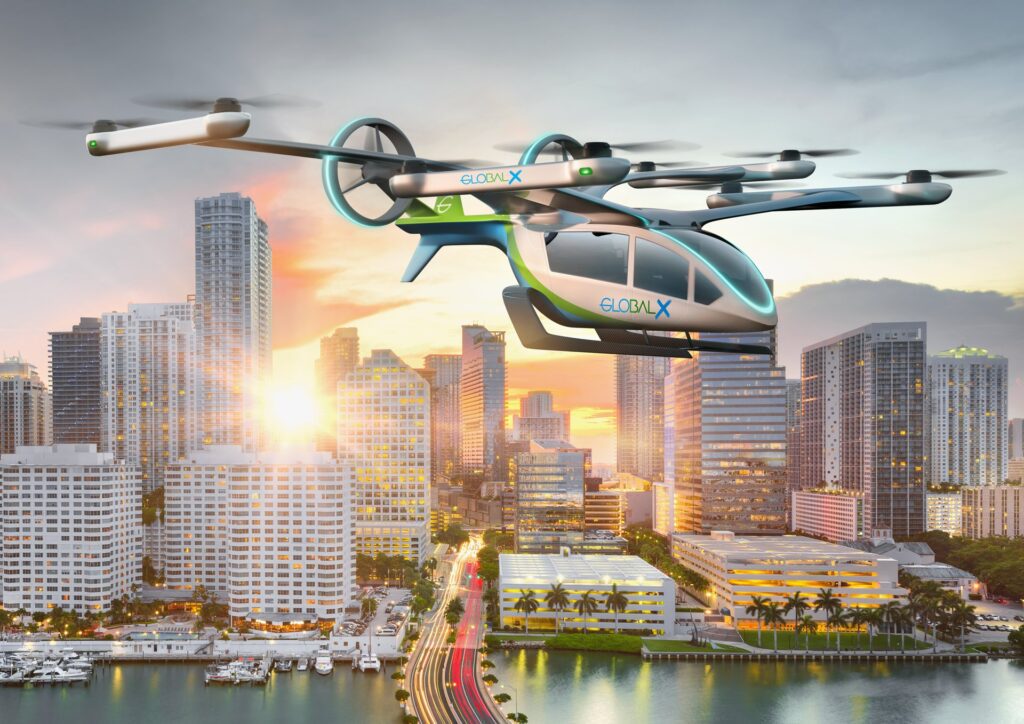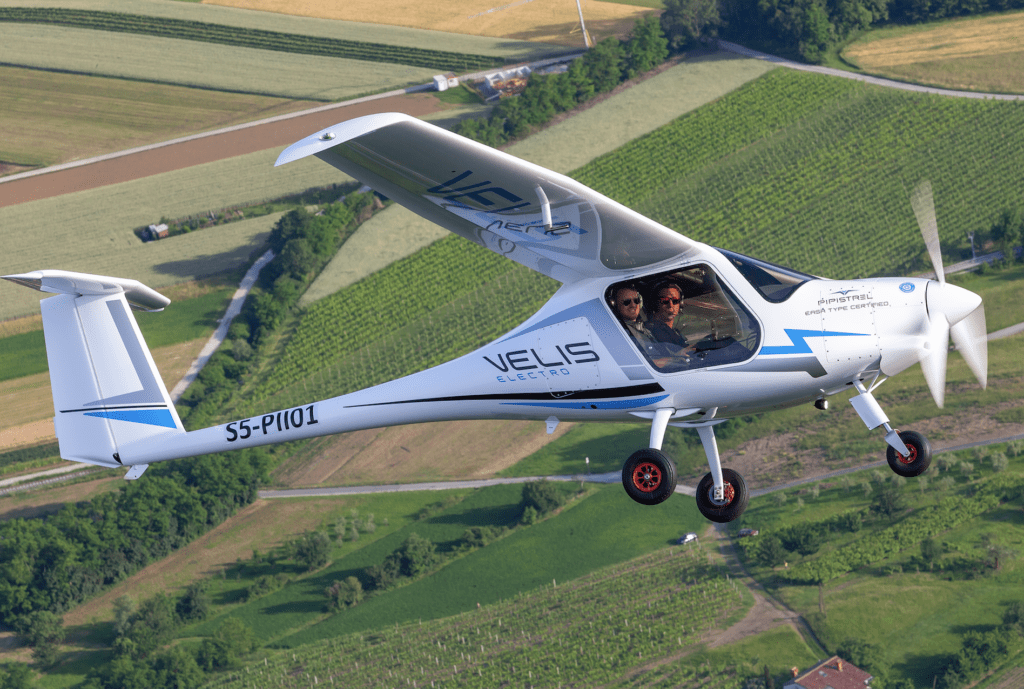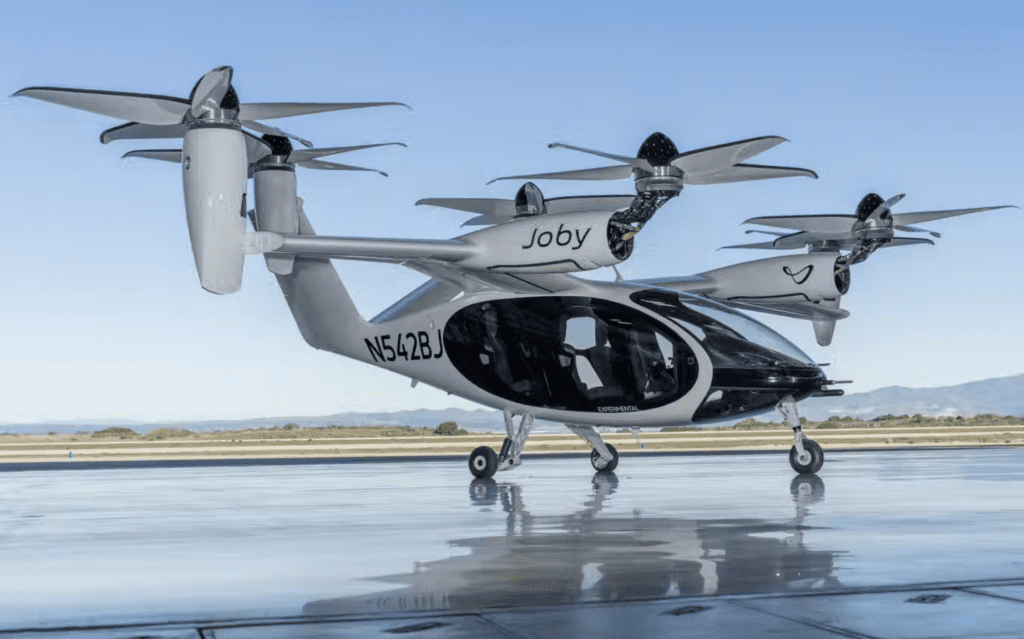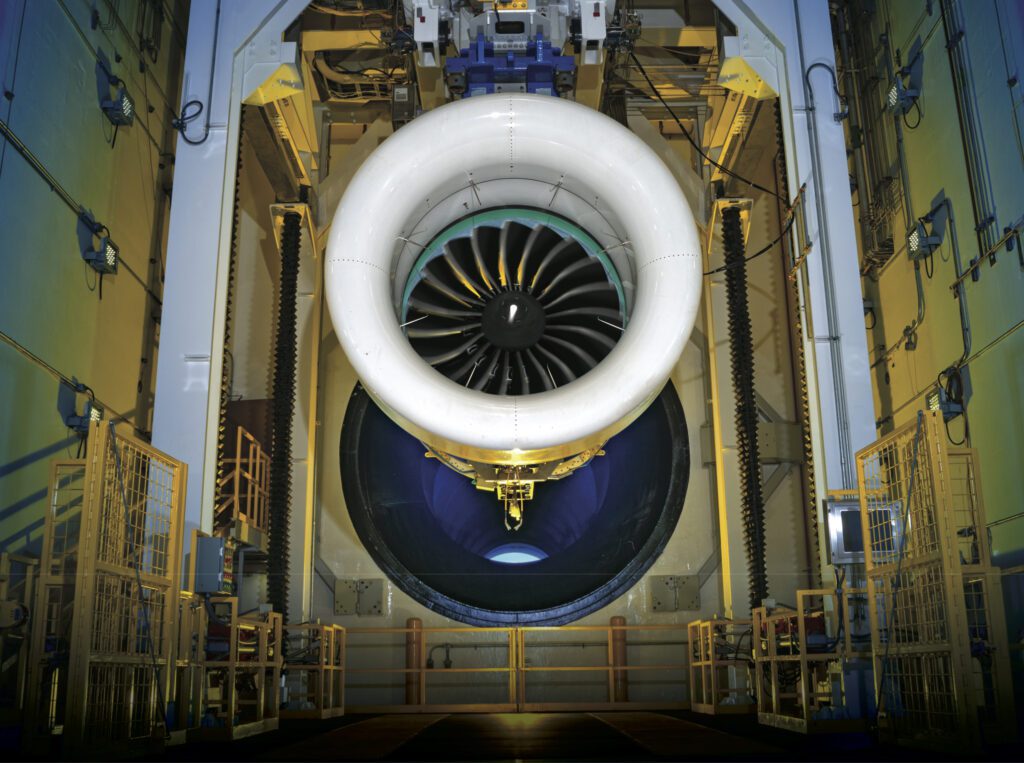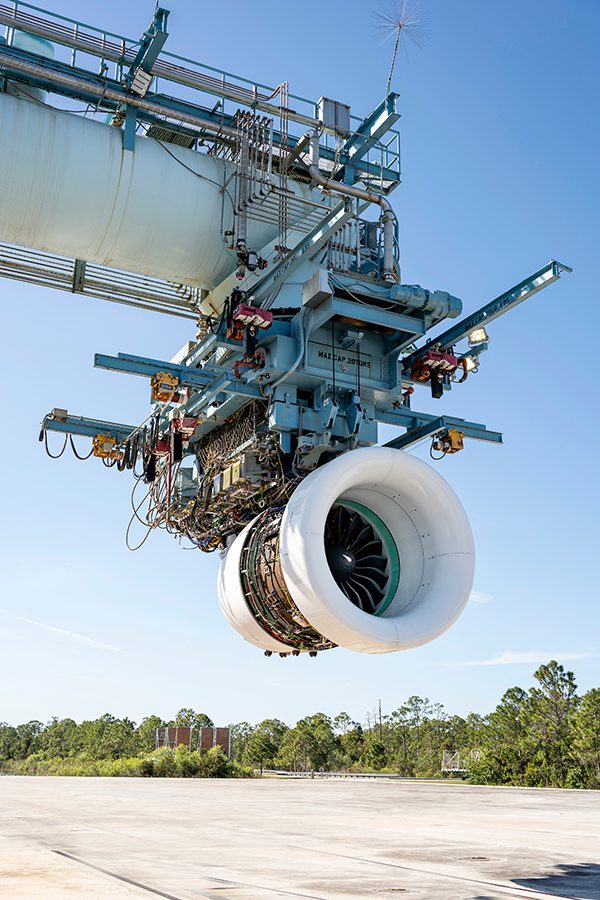

Government-industry consortiums continue to research, test, and release new data and insights about the 5G C-band radio altimeter interference issues that became a problem for aircraft landing at certain airports in recent months. (Photo, courtesy of NTIA)
While the number of new directives and policy updates from the Federal Aviation Administration regarding the impact of 5G C-band wireless service interference on aircraft radio altimeters has slowed since January, research, testing, and debate on a long-term solution for the safe co-existence of the two sides continues. Here, Avionics International provides an overview of some of the latest research and testing that is occurring to understand the interference that can be caused by 5G C-band stations located near airports.
“Everything is going fabulous with the FAA,” Jeff McElfresh, CEO of AT&T Communications, said in a response to a question about the company’s 5G C-band wireless service impacting aircraft radio altimeters during the company’s March 11 Investor Day event. “I think we and the industry have done a nice job kind of working through that. And so, no urgent issues or anything that gives us caution.”
On the aviation side of the 5G C-band spectrum equation, research and flight testing continues to occur both at the regulatory and industry levels. Last week, the FAA released its latest 5G C-band related airworthiness directive (AD), with this one targeting older Boeing 747 model aircraft, a total of 126 registered in the U.S.
The latest directive requires airlines flying those 747 models—747-100/200/300/400—to revise operating procedures within their airplane flight manuals for takeoff, instrument landing system (ILS) approaches, non-precision approaches, and go-around and missed approaches, when in the presence of 5G C-Band interference. Boeing has been issuing regular service related updates to operators as new test results become available.
According to the directive, testing on the altimeters featured on those older 747 models determined that the radio altimeter data could produce anomalies when in the presence of 5G C-band interference. Some of the effects of the interference include the generation of erroneous autoland messages and the adjustment of engine thrust levers to ground idle status while in-flight, among others.
FAA pilots and engineers are also actively flight-testing the 5G C-band interference problem on their own aircraft, releasing updates as they become available.
“We are testing for how 5G signals affect radio altimeters using FAA flight-test aircraft outfitted with spectrum analyzers and other specialized equipment,” a representative for the FAA told Avionics in an emailed statement. “Our team is measuring and analyzing the 5G energy that airplanes encounter in flight. Much is known about how these signals behave at ground level, but the details of energy levels at aircraft altitudes are based largely on engineering models.”
By comparing the results of existing engineering models with actual measurements taken during flight tests, the agency believes it can deepen the body of knowledge available on how 5G C-band interacts with safety critical flight instruments.
“We will make all of our analysis available to our federal partners and to the wireless companies participating in these tests,” the FAA said.
Some of the partners that the FAA is sharing that analysis with are members of the Joint Interagency Five G Radar Altimeter Interference (JI-FRAI) group, which includes participation from the Department of Homeland Security (DHS), Department of Defense (DoD), Federal Communications Commission (FCC), airlines, and avionics manufacturers.
The JI-FRAI group was first established last year and includes several individual members who are also performing their own flight testing of real in-flight scenarios evaluating how 5G C-band wireless service base stations can unintentionally impact the performance of radio altimeters. One member of the group, the Institute for Telecommunications Sciences (ITS)—the research laboratory arm of the National Telecommunications and Information Administration (NTIA)—published a special report earlier this month outlining some of the flight-testing its own researchers are doing in Colorado.

The Institute for Telecommunications Sciences is evaluating the impact of 5G transmissions from mobile trucks, pictured here, on a radio altimeter featured on a Robinson R44 helicopter. (NTIA)
A March 9 video released by the agency features Frank Sanders, a senior technical fellow at ITS, providing an overview of how the ITS team has set up an array of 5G transmitters attached to trucks—known as Cell on Light Truck (COLT) technology—at a Department of Commerce test site in Table Mountain, Colorado. The 5G transmitters provide connectivity to active 5G mobile phones at the facility, and the team is using specialized spectrum analyzers to measure the field strength of the 5G transmissions and how they can unintentionally cause interference to radio altimeters featured on a Robinson R44 helicopter that they’re flying over the transmitters. ITS has also equipped the R44 with spiral measurement antennas that measure the field strength of the 5G transmissions within that slice of airspace.
“NTIA’s Boulder laboratory, ITS, has begun performing measurements of the unintentional antenna radiation from 5G base stations, to quantify exactly how much power will impinge on aircraft flying near such tower locations,” ITS notes in its update.
Sameh Yamany, chief technology officer of Viavi Solutions, the Scottsdale, Arizona-based test and monitoring equipment supplier, explained in emailed statements to Avionics how their technology helps evaluate potential interference issues through modeling and simulation.
“The testbed constructs 3D RF models for signals encountered in and around airports extending out at least 10 miles or more and up to 7,500 feet in elevation,” Yamany said, adding that the testbed consists of a signal generator capable of emulating 5G C-band interference along with a test set and handheld spectrum analyzer that monitor the performance of radio altimeter in signal time delay and path loss. “Leakage” emissions that replicate those generated from the 5G C-band 3.98-4.2 GHz spectrum can also be tested and evaluated using the testbed setup.
“By correlating the simulated RADALT emissions, the interference emissions and their power levels, the Viavi testbed records and reproduces the specific conditions where the RADALT impairs or fails,” Yamany said. The company supplies the test equipment for both laboratory simulations and field testing, which can require a different setup, using a vector signal analyzer (VSA) and generator supplied by Viavi called “Ranger.”
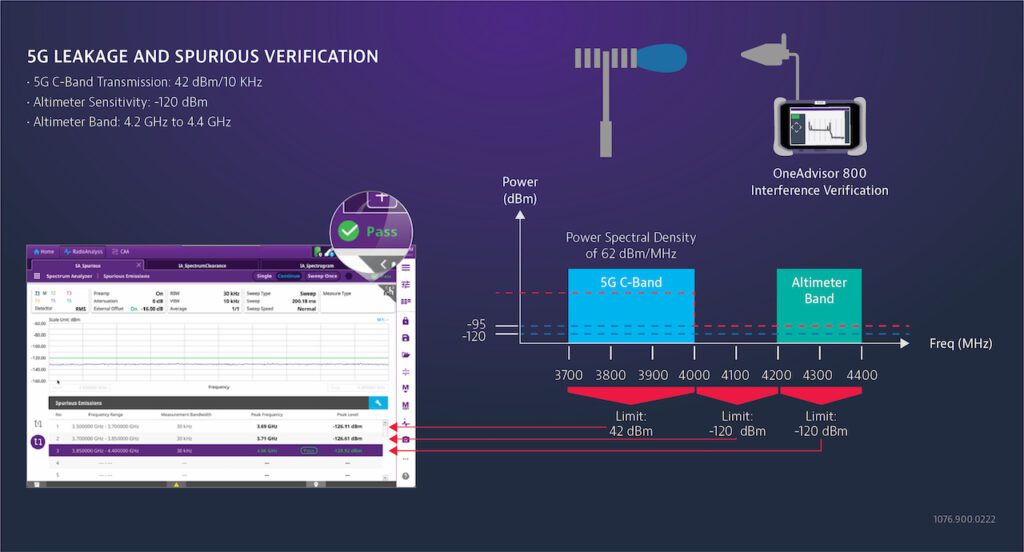
Viavi provided this overview of the testbed setup the company provides to test the impact of 5G C-band on radio altimeters. (Viavi Solutions)
“Field Spectrum Monitoring involves spectrum clearance and interference identification,” Yamany said. “In some cases, more detailed spectrum captures will be needed to adequately monitor and assess the RF spectrum in C-Band used by RADALTs and cellular base stations. The Ranger VSA can record live over-the-air (OTA) RF signals as experienced near the RADALT to monitor the spectrum environment in both the C-band and RADALT bands. For example, it can record up to 2.5 hours at 200 MHz IBW per channel, where one channel is set to capture between 3.8-4.00 GHz or 3.9-4.1 GHz , with precision GPS timestamped captures and custom triggering mechanisms.”
Several aviation manufacturers and service providers are also collaboratively researching 5G C-band interference as part of the Radio Technical Commission for Aeronautics (RTCA) Special Committee 239 and Eurocae Working Group 119. SC-239 was first established in 2020 and produced the first report that identified the potential interference issues associated with the operation of 5G wireless services in the 3.7-3.98 GHz spectrum range.
Claude Pichavant, an executive communication, navigation, and surveillance engineer for Airbus, participated in a Eurocontrol webinar last month where he discussed the RTCA and Eurocae goals in updating radio altimeter standards to make the technology less susceptible to out-of-band spectrum interference.
“The idea is to create a new standard that will define the new performances that are foreseen for new radio altimeters in order to be robust to the new 5G or even 6G environment. We expect to have this new performance standard by mid 2023,” Pichavant said.
Irving, Texas-based FreeFlight Systems has become one of the first avionics suppliers to directly address the interference issues with new technology, unveiling its new “RA-4500 Mark II (MK II) radar altimeter” during the Helicopter Association International’s 2022 Heli-Expo exhibition earlier this month. The company claims that the upgrade—a replacement for its existing RA-4000 and RA-4500 altimeters—has a “5G mitigation solution” that is a “unique combination of internal filtering and Digital Signal Processing (DSP) technology that can tolerate out-of-band 5G interference as well as other RF interferences.”
The post The Latest 5G C-Band Interference on Radio Altimeters Research, Testing and Technology Updates appeared first on Aviation Today.
—————
Boost Internet Speed–
Free Business Hosting–
Free Email Account–
Dropcatch–
Free Secure Email–
Secure Email–
Cheap VOIP Calls–
Free Hosting–
Boost Inflight Wifi–
Premium Domains–
Free Domains
